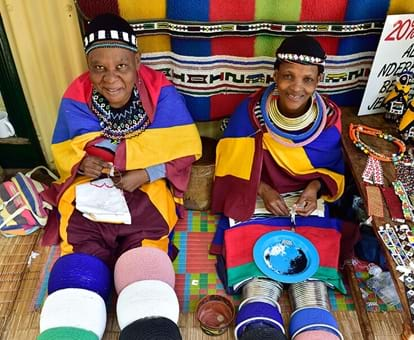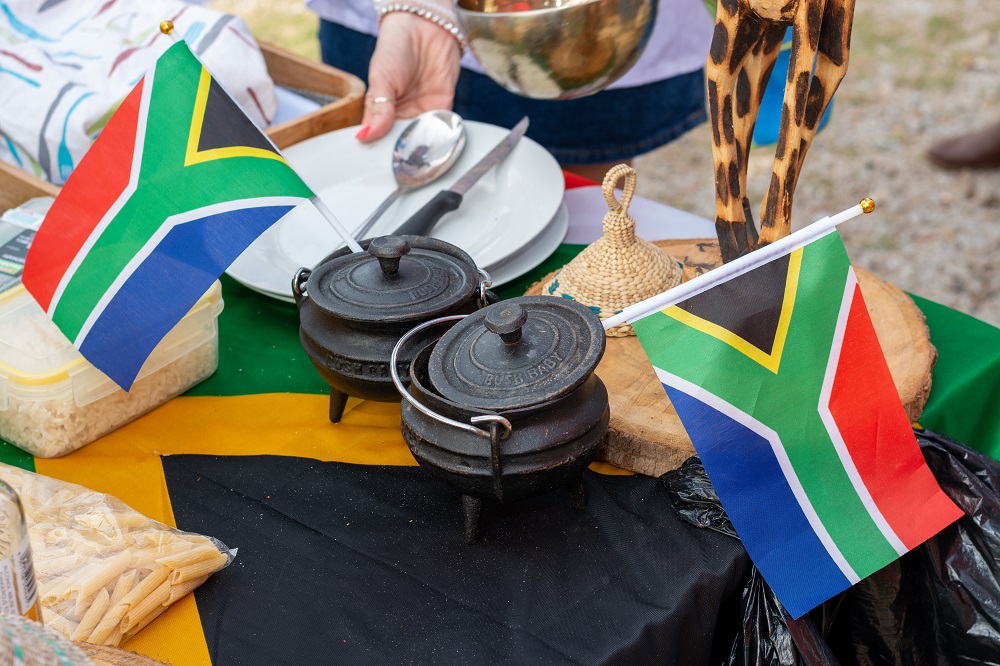What Does South African Culture Today Mean?
What Does South African Culture Today Mean?
Blog Article
Some Ideas on South African Culture Today You Need To Know
Table of ContentsThe 10-Second Trick For South African Culture TodaySouth African Culture Today Things To Know Before You BuyNot known Factual Statements About South African Culture Today Indicators on South African Culture Today You Should KnowThe Ultimate Guide To South African Culture TodayThe 9-Second Trick For South African Culture Today
An issue of significance in Zambian towns is the passing away of enjoyed ones. All members of the town put money, time and initiative together for the interment of the deceased.Throughout the mourning duration; men remain outside your house and the females remain inside your house of the deceased. After talking about the dead, the town strolls to the place of interment to say their last farewells. Songs and dancing is a really important element of the Zambian society. The various tribal systems have their own dancing kinds; nonetheless, makishi is common amongst all people.
Some Of South African Culture Today
When it pertains to music, drums are made use of one of the most, with a selection of drumming ceremonies. In Zambia, majority of individuals are Christian; Protestant and Roman Catholic. There are tiny teams of Muslims and Hindus, with the remainder adhering to local native tribal beliefs.

South African heritage and culture is immensely diverse, and includes several groups of people that each have their own practices and ideas. Having such a variety of people and cultures is what makes South Africa so special. In real feeling of the phrase, we are a rainbow nation.
South Africa has around three hundred thousand Portuguese people staying in it. Making it the 7th on the listing of countries with the most Portuguese individuals in it beyond Portugal. Portuguese is not only a culture, yet it is additionally a language and a nationality. Portuguese people originate from the nation of Portugal in Europe, however, due to Portugal (like many other countries in Europe) exploring the world and conquering other nations throughout the 15th 20th centuries, South Africa has what we call Portuguese South African's living in it.
6 Easy Facts About South African Culture Today Shown
Amongst the prominent functions of the topography is a plateau that covers almost 2 thirds of the center of the country. The plateau facility rises toward the southeast, where it culminates in the Drakensberg variety, component of a cliff that separates the plateau from the seaside areas. The Drakensburg consists of Champagne Castle, the greatest peak in the nation.
The area north of the Witwatersrand, called the bushveld, slopes downward from eastern to west toward the Limpopo River, which develops the international border. The western area of the plateau, the middleveld, likewise comes down in the direction of the west and differs in altitude between the highveld and bushveld. Between the Drakensburg and the eastern and southern shoreline, the land comes down to the sea.
Nearer the coastline there is a low-lying level called the eastern lowveld. Southwest of the plateau the nation becomes considerably much more dry, providing means to the stony desert of the Great Karroo, bordered on the eastern by the lower, better sprinkled plateau of the Little Karroo. Separating the completely dry southern inside from the sandy coastal of the southerly coastline and West Cape is another array, the Langeberg.
The Basic Principles Of South African Culture Today
The country's racially, ethnically, and politically separated history has created nationwide and subnational signs that still work as signs of the country, and others symbols that are approved just by particular teams. The monoliths to white inhabitant conquest and political dominance, such as the Afrikaner Voortrekker ("pioneer") Monolith in Pretoria and the Rhodes Monolith recognizing the British colonial realm builder and Cape prime preacher Cecil Rhodes, stay sectarian icons.
The first modern-day inhabitants were the San ("bushman") hunter-gatherers and the Khoi ("Hottentot") individuals, that rounded up animals (South African culture today). The San might have existed for countless years and left evidence of their presence in thousands of old cavern paintings ("rock art"). Bantu-speaking clans that were the forefathers of the Nguni (today's amaZulu, amaXhosa, amaSwazi, and vaTsonga peoples) and Tswana-Sotho language groups (today's Batswana and Southern and Northern Basotho) moved down from east Africa as very early as the fifteenth century

The two former republics of the Orange Free State and Transvaal (South African Republic) were developed by Afrikaner settlers that defeated and dispossessed the Basotho and Batswana. Lesotho would have been by force incorporated right into the Orange Free State without the expansion of British security in 1869. The ultimate marriage of the nation arised from the South African Battle (18991902) between the British and the 2 Afrikaner republics, which minimized the nation to spoil at the beginning of the twentieth century.
Afrikaners traditionally considered themselves the just real South Africans and, while giving complete citizenship to all residents of European descent, rejected that standing to people of color up until the democratic change of 1994. British South Africans maintain a feeling of cultural and social connection to Great Britain without deteriorating their identity as South Africans.
What Does South African Culture Today Mean?
The diversity and fragmentation within ethnic collections and the equilibrium of stress between those teams throughout the twentieth century avoided interethnic civil problem. While intergroup tensions over resources, entitlements, and political dominance continue to be, those disputes are as likely to pit Zulu against Zulu as next page Zulu against Xhosa or African against Afrikaner.
From colonial India, British merchants and administrators brought the bent steel decorative roof coverings and slim shoelace job pillars that still typify the verandas of homes in communities and cities throughout the country. Holy places add an essential architectural aspect also in the tiniest towns. Along with the soaring steeples and classic stonework of Afrikaans Dutch Reformed churches, Anglican churches, synagogues, mosques, and Hindu temples offer selection to the religious building scene.

Slaughtering and the brewing of my sources standard cereal beer are vital in protecting the participation and a good reputation of the forefathers that are considered the guardians of good luck, prosperity, and health. Indian neighborhoods preserve their indigenous culinary customs and use them on Islamic and Hindu routine and ceremonial events. Afrikaners and Coloured individuals gather at weekend breaks and special celebrations at multifamily barbecues called braais, where community bonds are strengthened.
Due to the fact that this was the key financial business of both black Africans and white colonists, conflict between those groups focused see this website on the belongings of grazing land and animals. In 1867, the biggest ruby deposits in the globe were discovered at Kimberley in the west central area. The riches from those fields helped finance the exploitation of the best gold reef on the planet, which was uncovered on the Witwatersrand in 1886.
How South African Culture Today can Save You Time, Stress, and Money.
This brought about misunderstandings and purposeful misrepresentation in the transactions of white settlers and government officials with African principals throughout the colonial duration (South African culture today). In the facility of African reserves, some aspects of common and mainly "tribal count on" land tenure were protected, and also in white backwoods, kinds of public tenure were still exercised in locations with African neighborhoods
After the democratic makeover of 1994, programs for land restitution, redistribution, and reform were set up, however progression has actually been slow. The white minority still controls eighty percent of the land. Following agricultural land intrusions in Zimbabwe, the Department of Land Matters has actually pledged to speed land redistribution.
Report this page